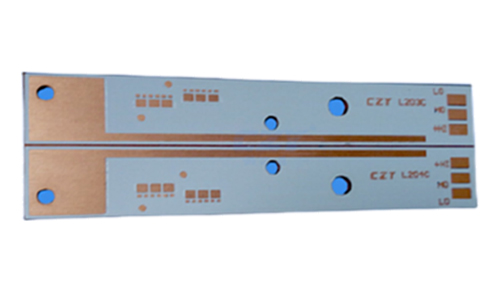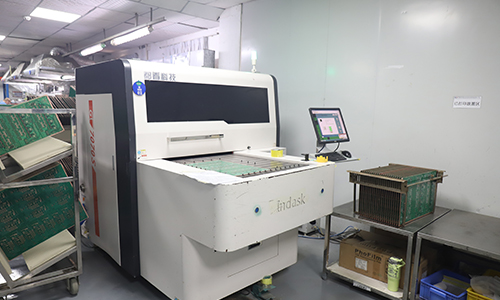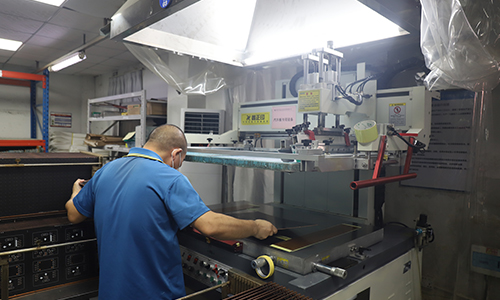
Copper substrate for automotive lighting is a printed circuit board designed for automotive lighting systems, using copper as the main thermal and electrical conductive material.
Copper Substrate For Automobile Lights Product Introduction

1.Product Overview
Copper substrate for automotive lighting is a printed circuit board designed for automotive lighting systems, using copper as the main thermal and electrical conductive material. Since automotive lamps generate a lot of heat when working, the superior heat dissipation and electrical properties of copper substrates make it an important part of modern automotive lighting solutions.
2.Main Features
Excellent heat dissipation performance:
Copper has high thermal conductivity (about 400 W/m·K), which can quickly dissipate the heat generated by LED lamps, prevent overheating, and ensure that the lamps work at the optimal temperature, thereby extending the service life.
High current carrying capacity:
The copper substrate has excellent electrical conductivity and can carry higher currents, which is suitable for high-power automotive lighting equipment such as headlights, taillights and daytime running lights.
High temperature and corrosion resistance:
Automotive lamps are often exposed to high temperatures and harsh environments. Copper substrates have good high temperature resistance and corrosion resistance and can work stably under various environmental conditions.
Lightweight design:
Compared with traditional aluminum substrates, copper substrates are lighter, which helps to reduce the overall weight of the car and improve fuel efficiency.
Good electrical performance:
Copper substrates can effectively reduce resistance, improve current transmission efficiency, and ensure the brightness and stability of lamps.
3.Technical Parameters
| Number of layers | 2 |
| Thickness of sheet | 2.0MM |
| Surface treatment | OSP anti-oxidation |
4.Structure
Copper substrates for automotive lights usually consist of the following parts:
Copper layer: As the main material for thermal and electrical conductivity, the thickness is usually 1 oz to 3 oz.
Insulation layer: used to isolate the copper layer from other circuits to prevent short circuits and electrical interference.
Substrate material: usually high-performance materials (such as FR-4) are used to provide mechanical support and protection.
5.Application Areas
Headlights: such as xenon lamps, LED headlights, etc.
Taillights: including brake lights, turn signals and width lights.
Daytime running lights: improve vehicle visibility and safety.
Internal lighting: such as dashboard lights, door lights, etc.
 |
 |
6.Conclusion
Copper substrates for automotive lighting have become an indispensable component in modern automotive lighting systems due to their excellent heat dissipation performance, high current carrying capacity and environmental resistance. With the continuous advancement of automotive lighting technology and the increase in market demand, the application of copper substrates will continue to expand, providing more efficient and reliable lighting solutions for the automotive industry.
FAQ
Q: How many employees do you have in your factory?
A: More than 500.
Q: Are the materials you use environmentally friendly?
A: The materials we use are in accordance with ROHS standard and IPC-4101 standard.
Q: How is the environmental friendliness and recyclability of aluminum-copper based PCB?
A: Aluminum-copper based PCB are relatively environmentally friendly and recyclable, as aluminum and copper are recyclable materials. At the end of their product life cycle, these metals can be recovered and reused, reducing environmental impact.
Q: How does the cost of aluminum-copper based PCB compare to traditional FR-4 PCB?
A: Although the initial cost of aluminum-copper based PCB may be higher than that of traditional FR-4 PCB, their excellent thermal and electrical properties can reduce the need for heat dissipation components, thereby saving costs in long-term operations. Additionally, the durability and reliability of aluminum-copper based PCB can also help reduce maintenance and replacement costs.
Q: Can you manufacture HDI printed circuit board substrates?
A: We can manufacture any interconnect PCB from four-layer, one-layer to 18-layer HDI.